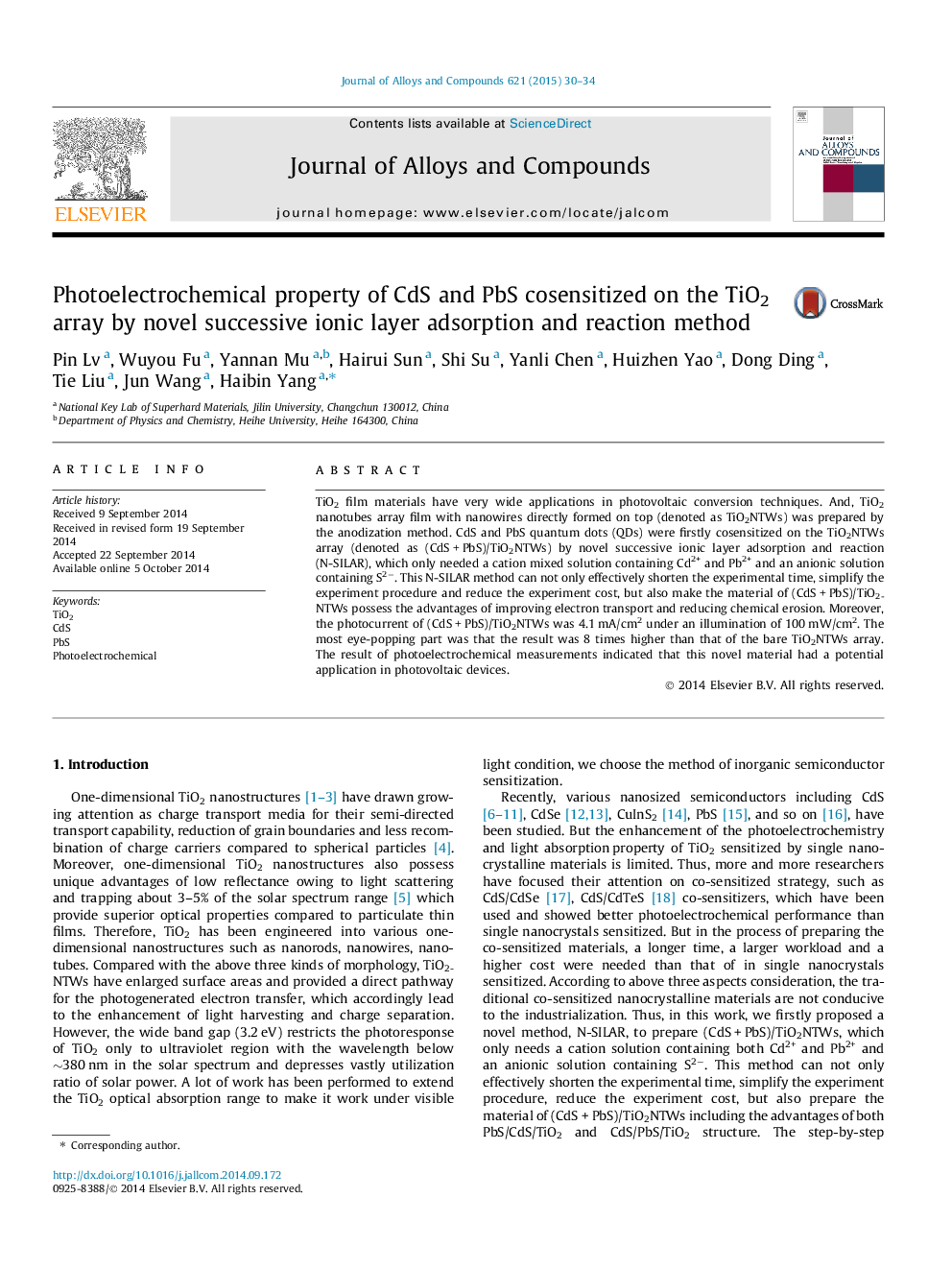| Article ID | Journal | Published Year | Pages | File Type |
|---|---|---|---|---|
| 8000032 | Journal of Alloys and Compounds | 2015 | 5 Pages |
Abstract
TiO2 film materials have very wide applications in photovoltaic conversion techniques. And, TiO2 nanotubes array film with nanowires directly formed on top (denoted as TiO2NTWs) was prepared by the anodization method. CdS and PbS quantum dots (QDs) were firstly cosensitized on the TiO2NTWs array (denoted as (CdSÂ +Â PbS)/TiO2NTWs) by novel successive ionic layer adsorption and reaction (N-SILAR), which only needed a cation mixed solution containing Cd2+ and Pb2+ and an anionic solution containing S2â. This N-SILAR method can not only effectively shorten the experimental time, simplify the experiment procedure and reduce the experiment cost, but also make the material of (CdSÂ +Â PbS)/TiO2NTWs possess the advantages of improving electron transport and reducing chemical erosion. Moreover, the photocurrent of (CdSÂ +Â PbS)/TiO2NTWs was 4.1Â mA/cm2 under an illumination of 100Â mW/cm2. The most eye-popping part was that the result was 8 times higher than that of the bare TiO2NTWs array. The result of photoelectrochemical measurements indicated that this novel material had a potential application in photovoltaic devices.
Keywords
Related Topics
Physical Sciences and Engineering
Materials Science
Metals and Alloys
Authors
Pin Lv, Wuyou Fu, Yannan Mu, Hairui Sun, Shi Su, Yanli Chen, Huizhen Yao, Dong Ding, Tie Liu, Jun Wang, Haibin Yang,
